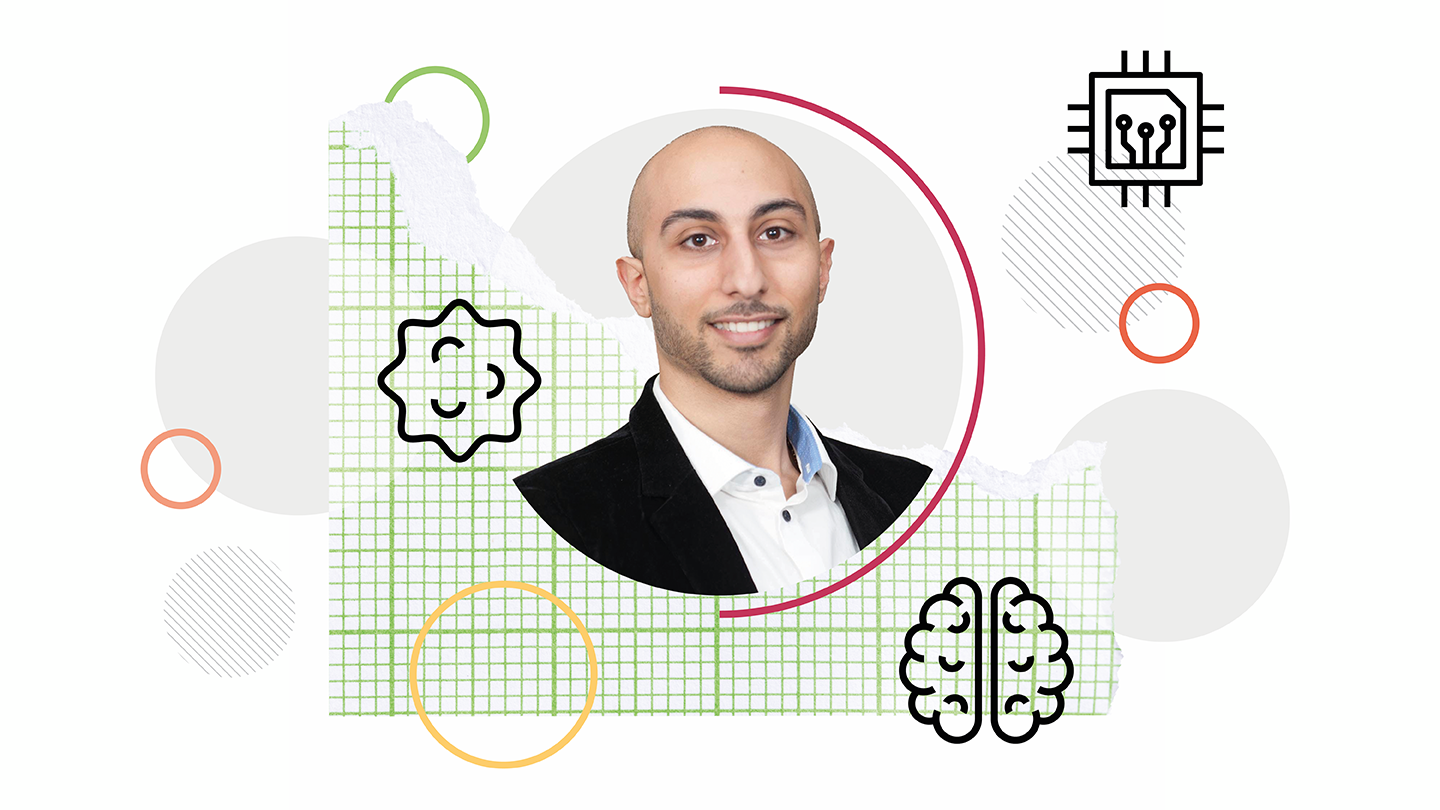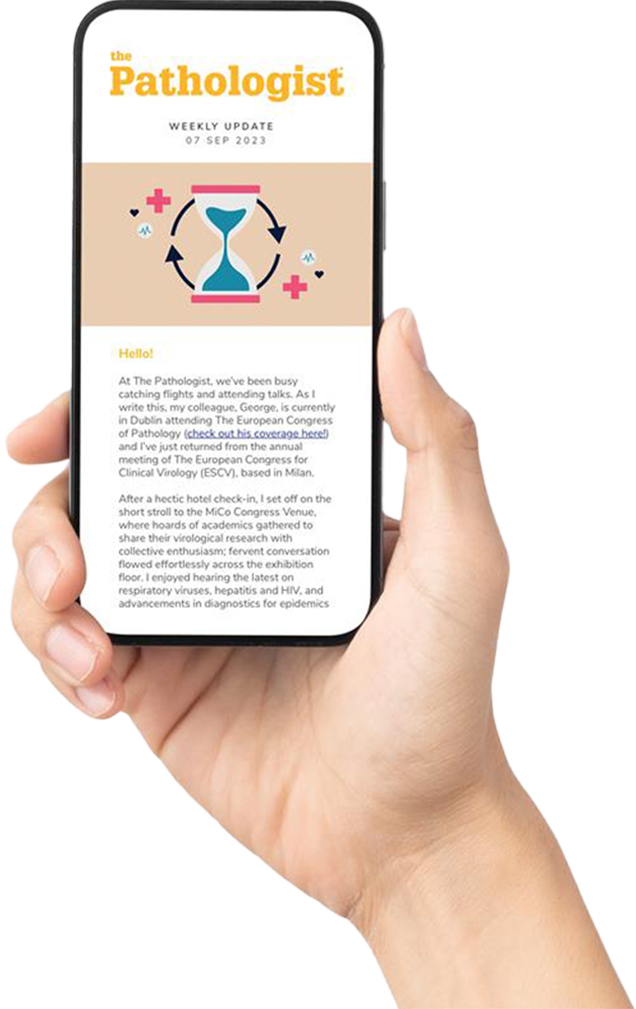
What drew you to pathology?
My initial ambition was to become a surgeon. At medical school I took a few electives in surgery where I realised I was curious about what happened to my surgical specimens and what they could reveal about the downstream impact of my surgeries. So, thinking it would make me a better surgeon, I opted for an elective in pathology.
That elective exposed me to some amazing people and excellent mentors, and I was inspired by the mental gymnastics that I saw happening in the lab. While students are exposed to pathology in medical school, actually practicing it proved to be very eye opening.
One pathology elective led to another as I became more enamoured with the field. Pathology ended up as my first choice match for residency – and the rest is history.
What led to you pursuing informatics?
When I started my residency, informatics didn’t exist as a medical specialty. By the time I was thinking about fellowships, however, it had just become a board certified specialty, and it felt like a good fit for me.
That led me to UPMC, which had a strong reputation for its pathology informatics program. I was lucky enough to be mentored by Liron Pantanowitz, who might be described as one of the fathers of digital pathology.
How would you describe your work in lay terms?
All the computing and information systems we use in healthcare settings are developed, configured, deployed, and maintained by informaticists – so my job involves working with a lot of technology for the benefit of people’s health.
I get to work with new technologies for both operational and clinical needs. We might be setting up and improving laboratory information systems, developing tools to help patients in need of care, or testing off-the-shelf solutions and putting them to work – and it's a lot of fun.
What have been some of your career highlights?
At the height of the pandemic, I was part of a team responsible for setting up a system-wide digital pathology operation at Memorial Sloan Kettering Cancer Center in New York. That was a highlight in terms of successfully addressing two critical needs: ensuring continuous care for patients and protecting the pathologists by enabling them to work remotely.
Another highlight has been working with Hooman Rashidi and Liron Pantanowitz in the Computational Pathology and AI Center of Excellence (CPACE) at UPMC. The group designs and tests generative AI models – some of which are now approved for clinical use. I find that translational work, from research to clinic, incredibly rewarding.
More recently, I’ve been appointed as Medical Director of the UPMC Digital Pathology Research Center to study and evaluate emerging hardware and software technologies in pathology, such as novel robotic scanning technologies. A great example of our work is the validation of an AI tool for prostate cancer detection that is now actually being used by pathologists to support their clinical workflows.
It’s very satisfying to see new tools enter clinical use. There is a great team of people working very hard to ensure these technologies are properly vetted and integrated.
What is the most difficult aspect of your work?
The greatest challenges in informatics tend to be around change management. Implementing changes that disrupt established workflows and pull people out of their comfort zones is never easy. Dealing with that involves absolute faith that the new tools you’re asking people to use are better solutions, and being able to communicate that to them.
We witness a lot of skepticism around AI, particularly. The term artificial intelligence implies we’re being replaced by robots that take away the need for human decision making. I prefer to talk about augmented intelligence – a process where a human uses the outputs of a machine learning model alongside their own expert knowledge, and ancillary tests they have performed, to reach a conclusion. At the end of the day, AI is nothing more than another test and data point that the pathologist takes into consideration with all the other data points to come to a diagnosis.
The other challenge is keeping up with the pace of innovations in the field. It can seem like as soon as you have finished testing and implementing a new system in an institution, another one comes along that’s twice as effective or accurate. That’s not only challenging for us informaticists, but also for the professional societies and regulatory bodies responsible for the formal guidelines and guardrails for these sorts of systems.
Informatics is a challenging field. To use an analogy borrowed from Liron Pantanowitz, you need to be able to look down at the football field from the blimp 10,000 feet up and be able to describe the details of every blade of grass and its relationship to all its neighbours. The scale and volume of work can be intimidating. But I am thankful that I work with a fantastic team at UPMC and, together, we make the magic happen.
What’s your favorite aspect of your work?
It’s fun! And it matters.
In one of my pathology residency interviews, when asked what effect I wanted to have on pathology, my answer came easily: “I want to fundamentally modernize pathology and the tools we use in its practice.”
Now I can reflect on my achievements and recognize that I have had, I hope, a small part to play in some of the larger advances in informatics and patient care. I can confidently say that the tools to truly modernize pathology are now available. Next, we need to persuade the pathology community to step onto the adoption curve.
What gets you out of bed in the morning?
I honestly enjoy what I do, and I believe in its value. I have come across a lot of people who believed we were wasting resources on technology that wasn’t useful. Now, those same people are emailing or calling me to resolve issues with those same technologies they were skeptical about – and they are very comfortable using them. That gives me confidence that patients really are benefitting from all the work we are doing. Stories like that keep me motivated.
What advice would you give to those who might want to follow in your footsteps?
We need more informaticists in general – and definitely in pathology. It’s certainly a growth area in terms of employment, with great job security. It’s a tremendous field for those with the skills to bridge the gap between clinical and technical needs, and liaise with the people on either side.
Sometimes the hardest things in life are the things most worth doing. Don’t let anyone tell you in life that it is not that easy.




